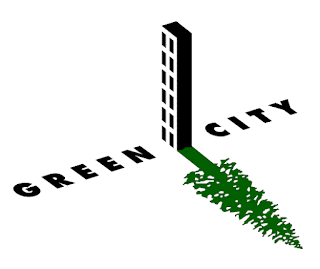European green building is leading the way forward
It often seems like smaller countries are doing the most to tackle climate change; nations like Switzerland and Austria have some of the best recycling systems in the world, while the likes of Bhutan and Costa Rica are doing more than anyone to become carbon neutral nations. However, there are some major Western European nations that are making interesting attempts to improve their carbon footprints.
In 2015, France made it a legal requirement for all new buildings in commercial zones to cover part of their rooftops in plants or solar panels. This helps reduce the amount of energy it takes for these buildings to be heated in the winter, or cooled in the summer. The law could have gone further, and was watered down from original plans to cover the whole roofs of every new buildings in such a fashion, but this is still an inventive and hugely productive way to make buildings more energy efficient.
It hopes this office will have the lowest measured fit-out carbon footprint in the UK, as well as to use 98% recycled materials over the course of the redesign. They have also worked to encourage major cities in the UK to take on environmental challenges, helping places like Manchester and Birmingham embrace innovative, refreshing green design.
 Some of the most impressive green buildings in the world are to be found in Germany. The city of Freiburg boasts several of them, including the Solarsiedlung (Solar Settlement) and the Sonnenschiff (Sun Ship), which is a small, vibrant community powered entirely by solar energy in the city district of Vauban.
Some of the most impressive green buildings in the world are to be found in Germany. The city of Freiburg boasts several of them, including the Solarsiedlung (Solar Settlement) and the Sonnenschiff (Sun Ship), which is a small, vibrant community powered entirely by solar energy in the city district of Vauban.  What's particularly impressive is just how energy efficient the Reichstag (Germany's parliament) is- the building generates 80% of the energy it uses itself, and there is a special insulation system to prevent unnecessary heat loss. It all comes together to make the Reichstag one of the world's most energy efficient major buildings.
What's particularly impressive is just how energy efficient the Reichstag (Germany's parliament) is- the building generates 80% of the energy it uses itself, and there is a special insulation system to prevent unnecessary heat loss. It all comes together to make the Reichstag one of the world's most energy efficient major buildings.  Stefano Boeri's jaw dropping 'Bosco Verticale,' or 'Vertical Forest,' consists of two skyscrapers with trees planted on special platforms. These skyscrapers are tall enough to sustain more trees than an entire hectare of forest could. On a bright, sunny day, the Bosco Verticale really is one of the most stunning things in Milan, as lush vegetation springs confidently forth from the skyscrapers, turning the skyline a delightfully vivid green.
Stefano Boeri's jaw dropping 'Bosco Verticale,' or 'Vertical Forest,' consists of two skyscrapers with trees planted on special platforms. These skyscrapers are tall enough to sustain more trees than an entire hectare of forest could. On a bright, sunny day, the Bosco Verticale really is one of the most stunning things in Milan, as lush vegetation springs confidently forth from the skyscrapers, turning the skyline a delightfully vivid green.
Of course, there is a practical purpose to this as well, as the extra trees guzzle up CO2 and dust particles and emit clean oxygen, as well as bringing natural warmth to the building, and protecting people and houses from sustained exposure to harmful sun rays. Gutsy projects like this may make all the difference in the future in ensuring our cities remain appealing places to live.
Please also see: http://www.greencitytimes.com/Sustainable-Cities/reykjavik.html



